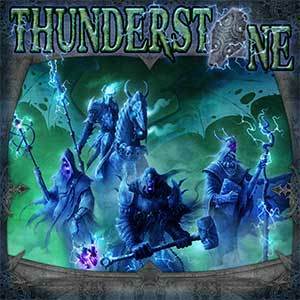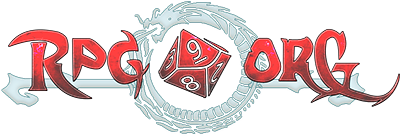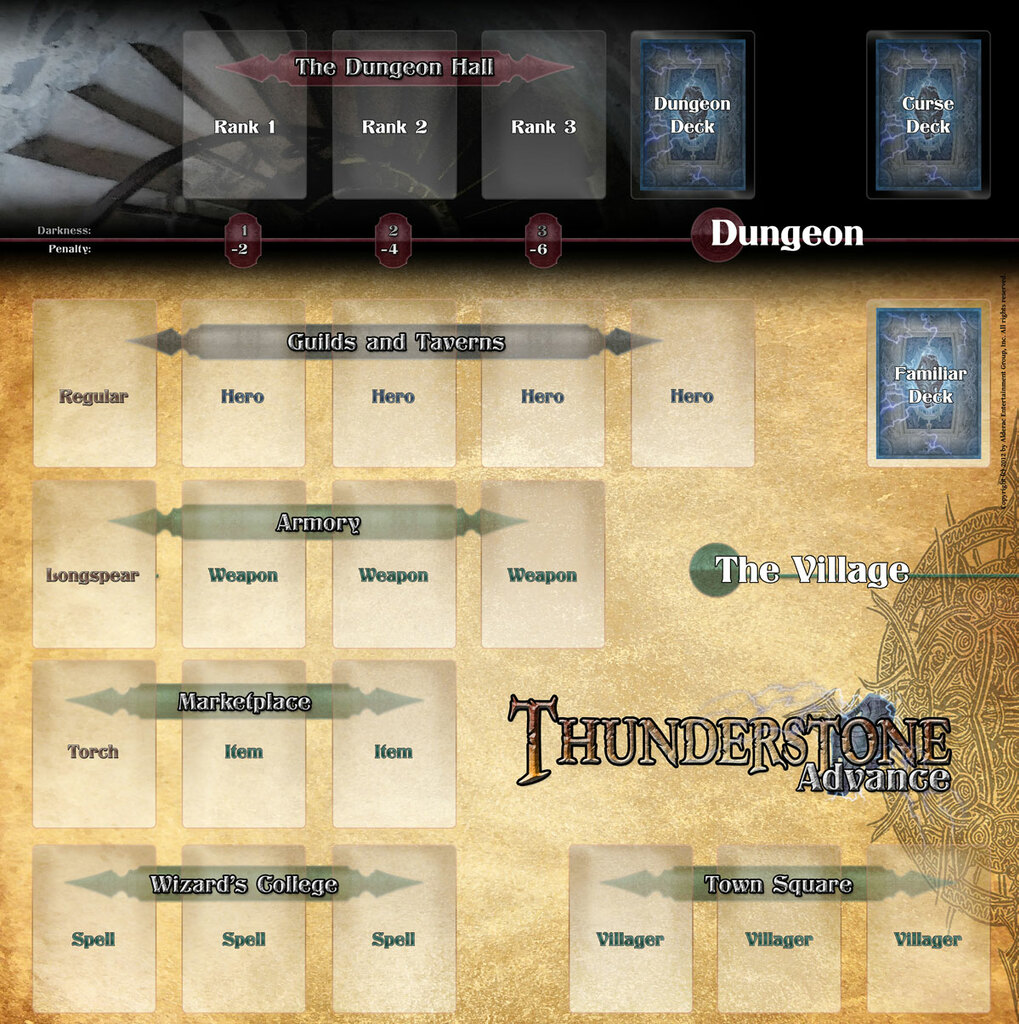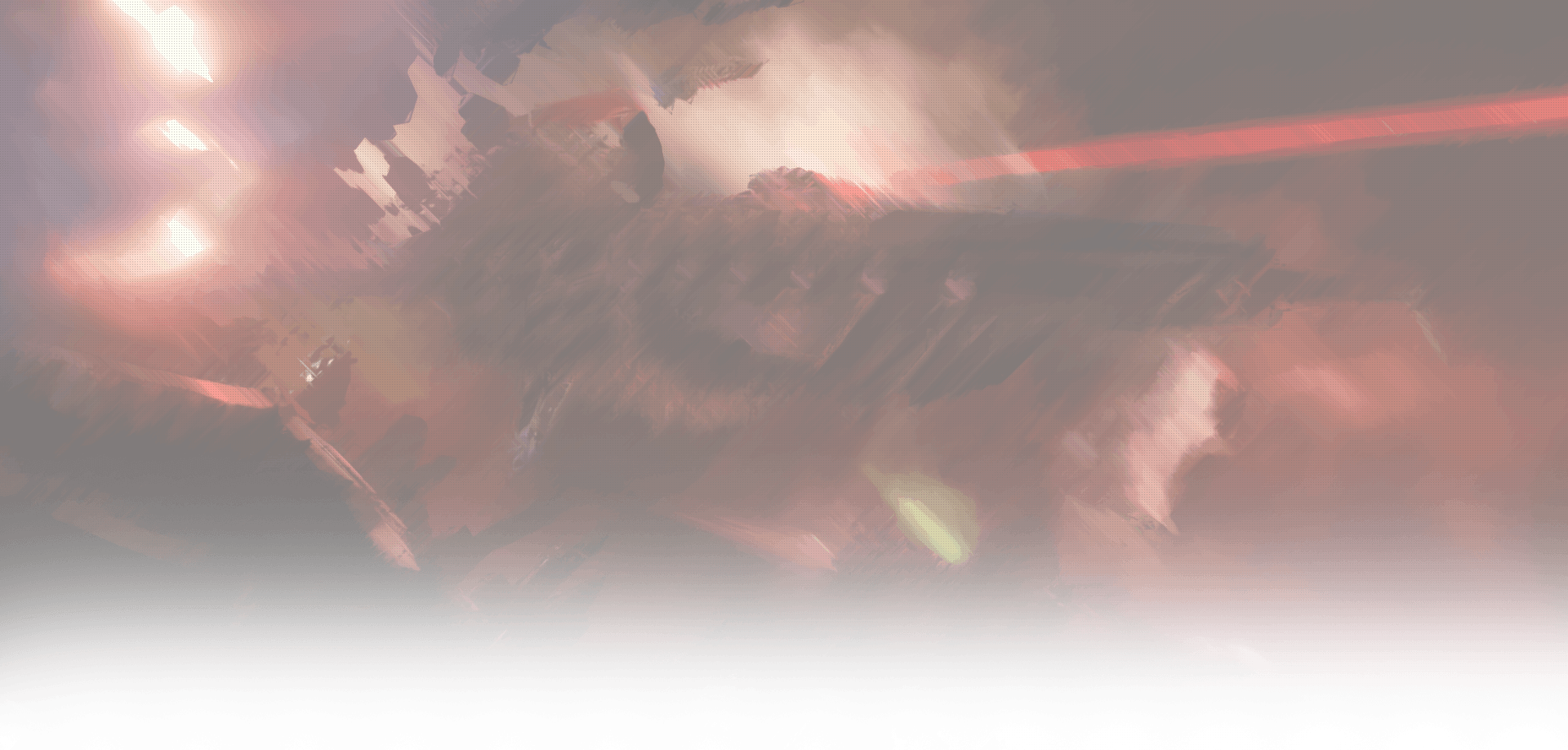
But why Thunderstone is so successful ?
I think the success could be attributed to three things : the interesting theme, the unique eye-catching art style, and the game mechanics. These are the things that set Thunderstone apart from the hordes of other deck-building games available in the market.
Thematically speaking this is a roleplayers dream : you are leading a group of fantasy heroes (thieves, wizards, fighters etc.) along with their cohorts and equipment into a dungeon to get one of the Thunderstones during the process. You collect victory points and experience by killing monsters in the dungeon. When you don't actively hunt monsters you buy equipment and hire new heroes and villagers to make your adventuring group (your deck of cards) more effective, or level up your already owned heroes to make them stronger. The unique and dark artwork adds a lot of the theme, and while some of the cards are not perfectly balanced, they all making sense.
Mechanics
In the game are fighting against a prearranged dungeon filled with monster cards, are tring to get the most victory points until the end. The players start with a 12-card basic deck, consisting a group of 6 lowly Militia and some basic equipment : 2-2 Torches, Pitchforks Daggers, and Iron Rations. In every turn they draw 6 cards, and have 3 options : Enter the Dungeon and do some monster hunting, Visit the Village to buy new cards and to level up Heroes if XP is available or Rest and remove a useless card from their deck. This is going on until somebody find the Thunderstone in the dungeon, and it's claimed or lost. Then theplayer with the most victory point wins, which is calculated from who (if anybody) owns the Thunderstone, slayed more and stronger monsters and high level heroes above anything else.
Where the Thunderstone basic rules are easy enough to understand, it's the individual card abilities and the variable setup which forces the players to take tactical decisions turn by turn and game by game. Some monsters will fill your deck with harmful Disease cards, while other cards enable you to buy some equipment in the dungeon as Spoils, another cards enable you to draw more, or spend more gold in the city... and there are no cards which are universally good in every turn. I already mentioned variable setup: in every game only 4 types of monsters and several types of village cards (weapons, spells, villagers, mercenaries) are available randomly from the several different types available in the game, so it's rare to have two games with the exactly same setup, especially with the expansions.
Expansions
I think it's clear from the above description that Thunderstone is already a somewhat complex game, even if you play with the core set only. Luckily the expansions were able to add to the game not only new cards but several new mechanics too. These additions are really adding to the game's theme, without making the game overly complex or bogged down.
The first expansion Wrath of the Elements added Traps and Guardians (extremely powerful boss monsters) to the game. The Traps are appearing randomly in the dungeon, and some of the players feels that it's (along with the later appearing Treasures) is a bad mechanic for balance reasons, however I tend to like them. descending into a trap and monster filled dungeon should contain some uncertainty.
In the second expansion, Doomgate Legion the introduced Treasures into the game, which could be gained randomly by slaying monsters in the dungeon. They also added a new Disease deck to replace the one on the core game, a move what made Disease causing monsters much more dangerous and unpredictable. The last addition was Mercenaries : Village cards with Dungeon abilities and attack power.
The next expansion Thornwood Siege turned the tables a bit, by featuring monster groups which could damage the Village stacks and the players without fighting in the Dungeon. These abilities on raiders and siege engines represented that they are sieging the village where the characters taking their supplies. The Heart of Doom expansion even added a new game mode and several card abilities which could alter the gameplay further !
I have to mention the Thunderstone : Dragonspire stand-alone set too, which introduces Setting cards (also available in Heart of Doom) which could alter the game's setting and rules from the start as global effects, and it's feature several cards which don't follow the generl templates we used to (for example hero grooups with 2 or 4 levels instead of 3)
The bright future
It seems Thunderstone still have a bright future. Thunderstone Advance seems to correct the few weaknesses the game had. The new starter deck is a good improvement and the new Thunderstone bearers are both thematically both mechanically improve the gameplay. The new card frames have a better functionality too. The sightly changed setup rules makes sense too.
They also add several new things : a double-sized Game Board decipting the Village and the Dungeon, and some things with no details available yet, like Familiars and Curses. I predict that Curses will replace the Disease deck, but of course, I could be mistaken.
All in all, I think it's a very good game, and it's good to know that the designers are able to improve upon it's solid base, again and again.
Zoltán "Cain" Mészáros




